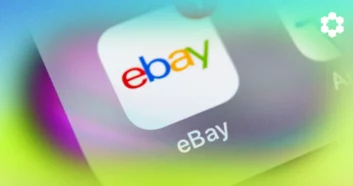Today’s ecommerce landscape is a rapidly evolving world in which consumers turn to the web in droves to engage with brands and find the products they need.
And that world just keeps on expanding.
Emerging ecommerce marketplaces pop up seemingly every day, posing new opportunities — and considerations — for sellers. In an environment where Amazon is no longer the only player in town, sellers who take advantage of this ever-expanding landscape have the potential to grow exponentially.
Here’s what you need to know about this new era of ecommerce.
Bracing for Change — and Opportunity
With new ecommerce marketplaces on the scene, the way ecommerce operates is surely shifting. New and veteran Amazon sellers alike should keep an eye out for the impacts this expanding landscape can have on their businesses, which include:
- Increased competition. New marketplaces mean new sellers. As sellers expand into emerging arenas, competition will not only increase but also shift in nature, with brands now competing across sales channels and markets.
- Lower fees. To compete with Amazon, sellers on emerging marketplaces often lower their prices to attract customers. Over time, this could make it more profitable for brands to sell on these new platforms.
- New customer bases. While some consumers peruse multiple marketplaces to find what they’re looking for, others stick to the channels they know and trust. That means that each new marketplace will have its own customer base, offering Amazon sellers a chance to grow their reach.
- Different marketing strategies. Each marketplace has its own format, algorithms, and user interfaces, so sellers will need to develop unique marketing strategies for each channel.
Ecommerce expansion certainly requires a more complex approach to sales and marketing, but sellers who can effectively diversify their channels can succeed in this new environment.

Emerging Ecommerce Marketplaces To Watch
Fortunately, there’s no shortage of marketplaces available that enable a more widespread sales and marketing funnel. Sellers who broaden out to these emerging marketplaces are well-positioned to win.
New Ecommerce Channels
Amazon is increasingly competing with other direct ecommerce channels, giving sellers a prime opportunity to expand into other marketplaces. Fast-growing channels that sellers should consider include:
- Shopify: Shopify is a cloud-based ecommerce platform that allows businesses to create their own online stores. It’s a popular choice for small businesses, offering a variety of custom sales products. And with Amazon’s new “Buy With Prime” app integration, sellers can compound their growth on both platforms by directing consumer traffic from their Shopify store to Prime.
- Shein: Shein is one of largest online fashion retailers, known for their low-priced fast-fashion, but they are now making the move to marketplace selling. They have been actively recruiting Amazon sellers since the beginning of summer to broaden their product offerings.
- Walmart: Once a traditional brick-and-mortar retailer, Walmart has become a true ecommerce presence, enabling brands to sell products directly through its proprietary marketplace.
- Wish: Wish is a global ecommerce platform that focuses on discounted products, making it a popular choice for consumers looking for bargains.
Social Commerce
Social media used to be simply an avenue for social connection. Today? It represents some of the most powerful ecommerce players in the business, each offering innovative ways for consumers to discover, evaluate, and purchase products. Social commerce harnesses the power of mobile commerce, influencer marketing, and live shopping to give consumers immersive buying experiences.
And it doesn’t just benefit shoppers. Sellers can capitalize on the popularity of emerging social commerce marketplaces to increase their brand reach, boost authentic consumer engagement, and drive sales.
A few key social commerce players include:
- Meta (formerly Facebook): Meta is the parent company of two of the most popular social media platforms in the world. Recently, the behemoth brand has made a big push into ecommerce, launching a number of new features that make it easier for brands to sell products directly through the Facebook and Instagram platforms.
- TikTok: TikTok, a social media platform best known for its short-form videos, has more than 1 billion active users worldwide. The platform offers features like live shopping and product tagging to help sellers get products in front of consumers.
How To Succeed in the New Ecommerce World
While these emerging ecommerce marketplaces pose certain challenges for today’s sellers, they also offer significant opportunities for growth and increased revenue.
The best way to ensure success?
Arm your business with the right tools that can automate processes, identify opportunities, and increase sales. WallySmarter, for example, is a one-stop-shop platform for Walmart sellers that offers at-a-glance analytics and product listing monitoring. The tool can help sellers optimize product listings and access key competitive insights.
Social sellers can use a solution like PixelMe to track customers across platforms and manage all Instagram, TikTok, and Facebook ads in one central location. PixelMe offers data-backed keyword recommendations that can help sellers drive traffic to their product listings.
Along with gathering the right tools for an expanding sales strategy, sellers should follow these best practices:
- Do your research. Before you start selling on a new marketplace, it’s critical to understand the ins and outs of the channel, including fees, customer buying habits, and marketing strategies that work best on that marketplace.
- Offer competitive prices. Consumers typically look for one thing above all: value. Sellers can beat their competition by providing high-quality products at competitive prices — no matter the marketplace.
- Provide excellent customer service. Customer service is essential for any business, but it can be a game-changer amid highly saturated ecommerce marketplaces. Ensure you always respond to customer inquiries quickly and efficiently.
- Promote your products. Quality doesn’t matter if customers can find your product. Learn what promotional tactics work best on your chosen marketplaces, then take the time to craft strategic plans for optimizing product listings for search and creating multi- or omnichannel marketing strategies.
Streamline Marketplace Success on Amazon and Beyond
The only constant in the ecommerce world is change. Sellers need to stay adaptable if they’re going to succeed, and in today’s landscape, that means diversifying sales channels and taking quick advantage of emerging marketplaces.
Want to take your ecommerce strategy to the next level? See how Carbon6’s suite of selling solutions can boost your business.




